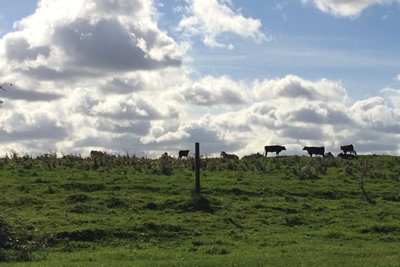The Ground beneath our feet
 Notes on a talk by Ken Rolfe, Chairman of Cambs GeoSites Team, the conservation arm of The Cambridgeshire Geology Club whose talk ‘Hartford beneath our feet’ explained the geological development of our local (Hartford stretch of Great Ouse) landscape.
Notes on a talk by Ken Rolfe, Chairman of Cambs GeoSites Team, the conservation arm of The Cambridgeshire Geology Club whose talk ‘Hartford beneath our feet’ explained the geological development of our local (Hartford stretch of Great Ouse) landscape.
After solid strata were laid down around 2.5 million years ago, the key event was just 400,000 years ago when the ice cap covered present day East Anglia to London. Consequently we sit on a combination of Boulder clay and Oxford clay that has been successively flushed out to the Fenland basin by the powerful surge of melt waters, the erosion of which has left anything up to 30 feet of sand and gravel topped by rich alluvial silt on the Great Ouse meadows.
Surprisingly the earliest accurate geological maps date only as far back as 1975, since when Ken has studied the local geology from his home in Wyton including bore holes which extended to 32 feet before hitting ‘solid’ clay.
In terms of Ice Ages we are part of a much bigger picture and quartzite and other erratic rocks from Scotland and Scandinavia have been identified in Paxton Pits, found during sand and gravel excavations.
Similarly remnants of an ancient coral reef have been identified at Upware, which is surrounded on three sides by the Fenland peats which could be as recent as 8,000 years or younger.
Later ice ages didn’t reach Hartford but their melt deluges cleared away some of the previous glacial deposits. This was followed by the weathering and erosion effects of freezing and thawing to create the landscape we know today.
Ken used maps to show that most Fenland settlements including Hartford were established between the 5 and 10m contours.
Regarding a potential road bridge across the Great Ouse meadows, similar to St Ives by-pass, in his opinion “to pile, build and maintain it, could prove be much more expensive than anticipated.”
*A talk originally given to the Hartford Conservation Group